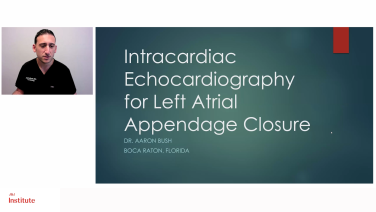Activation Mapping: How It Works & How It Can Go Wrong, with Joshua M. Cooper, MD

Watch this 2 unit, 21-part video playlist to learn more as Dr. Cooper presents on activation mapping, selecting an activation point, selecting a reference point, mapping the atrium, and case examples. This content is intended for Health Care Professionals in the United States.
Unit 1
Part 1: Introduction, with Josh Cooper, MD
Part 2: Overview, with Josh Cooper, MD
Part 3: Reference Point Selection, with Josh Cooper, MD
Part 4: Activation Mapping in the Atrium, with Josh Cooper, MD
Part 5: Annotation, with Josh Cooper, MD
Part 6: Case Example 1, with Josh Cooper, MD
Part 7: Case Example 2, with Josh Cooper, MD
Part 8: Case Example 3, with Josh Cooper, MD
Part 9: Case Example 4, with Josh Cooper, MD
Part 10: Single Wrong Data Point, with Josh Cooper, MD
Unit 2
Part 11: Mapping System EGM Display, with Josh Cooper, MD
Part 12: WOI and Focal Tachycardia Example, with Josh Cooper, MD
Part 13: Atrial Flutter and the Arbitrary WOI, with Josh Cooper, MD
Part 14: Focal Tach and Slow Conduction Impact on WOI, with Josh Cooper, MD
Part 15: AT#1 Revisited with Slowing of Conduction, with Josh Cooper, MD
Part 16: Focal Tach with Very Slow Conduction, with Josh Cooper, MD
Part 17: Substrate Model in Tachycardia with Very Slow Conduction, with Josh Cooper, MD
Part 18: Shifting the WOI When Conduction Velocity is Very Slow, with Josh Cooper, MD
Part 19: Pitfalls Leading to Erroneous Maps, with Josh Cooper, MD
Part 20: How to Create a More Useful WOI, with Josh Cooper, MD
Part 21: Take Home Points, with Josh Cooper, MD





